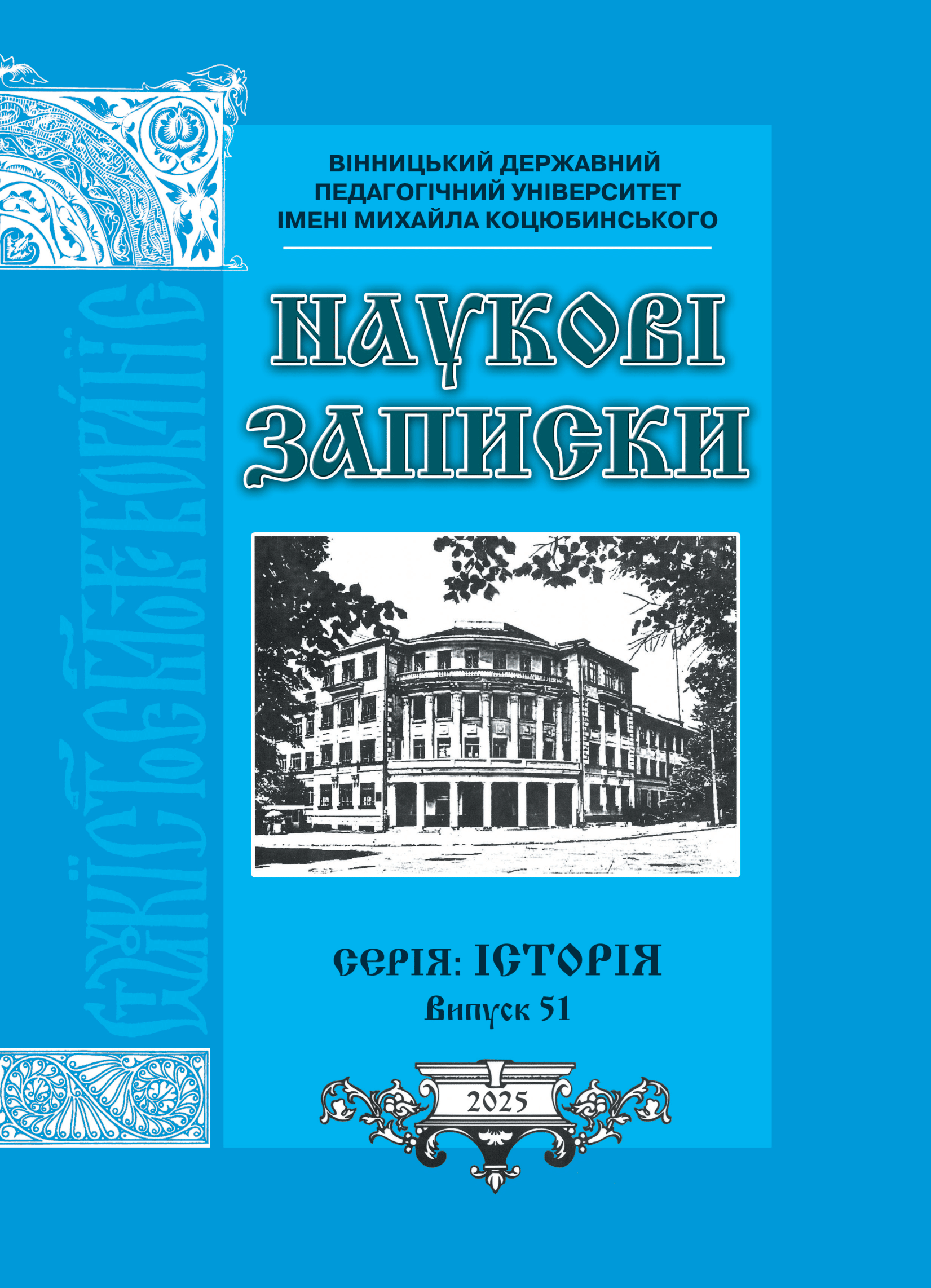Abstract
The purpose of the article is to investigate the formation of the content and ways of spreading the new historical narrative as a means of propaganda by the communist regime in Poland as one of the effective factors of repolonization in the lands of Silesia during 1945–1956. The methodology of the research is determined by its purpose and objectives. The key methodological principles used in the study are the principles of critical analysis of sources, historicism, objectivity, and a systematic approach. The application of these principles makes it possible to examine the objective grounds, ideological objectives, principles of content formation, and methods of dissemination of historical propaganda among the population of Silesia during the period under study. In addition to the general scientific methods of analysis and synthesis, the author used historical, chronological and historical genetic methods to study the process of formation and development of historical propaganda as one of the important factors of repolonization of Silesia in 1945-1956.. Scientific novelty of the work lies in the fact that, based on the analysis of the source material, in particular, publications in the mass media published in Silesia during 1945–1956, the formation of the content of a new historical narrative for the region in particular and Poland as a whole was traced, in which the new ethnic and socio-political status of Silesia was substantiated. It has been defined that this narrative was a significant propaganda factor and was part of a set of measures for the repolonization of Silesia in the specified period. Conclusions. In the processes of repolonization of Silesia, propaganda was an important factor, one of the key means of which was the formation of a new historical narrative. The main content components of this narrative were statements about the historical roots of the Polish population in the lands of Silesia, the violent nature of the Germanization of the region, the progressive role of the Communist Party and the USSR in returning these lands to Poland. This narrative was formed in two stages, of which the first (1945–1948) was distinguished by a more scientific nature and aimed at substantiating the historical roots of the Polish ethnic element in the region. In the second stage (1949–1956), internal political changes led to an increase in the content of historical propaganda of communist ideology, which largely displaced the content of national history. Based on this narrative during 1945–1956, a local variant of historical memory was formed on the territory of Silesia, combining elements of ethnic history and communist ideology.
References
Czubiński, A. (2001). Ziemie odzyskane w powojennej Polsce (1944-1990). Ewolucja systemu politycznego w Polsce w latach 1914-1998. T. 2. Polska Ludowa (1945-1989). Cz. 1, Zbiór studiów, 379-400.
Gierowski, J. A. (1948). Polskość Śląska w począt kach XIX wieku w świetle nieznanej ankiety kościelnej z 1814 r. Sobotka, III, Pr.II, 409-446. https://sbc.org.pl/publication/686484
Gotkiewicz, M. (1947). Nowa Pojana pod Sobótka. Odra, 1947, 39(96), 1. https://sbc.org.pl/publication/592423
Hierоwski, Z. (1948). Niecierpliwym pod rozwagę. Odra, 29 (138), 2. https://sbc.org.pl/publication/593540
Kaczmarek, M., Minta-Tworzowska, D. (2012). The Józef Kostrzewski Poznań School of Archaeology. Several reflections on the illuminations and shadows of prehistory studies in respect to the Bronze and Early Iron Ages. Folia Praehistorica Posnaniensia. Uniwersytet Im. Adama Mickiewicza W Poznaniu Instytut Prahistorii, XVI, 25-40.
Klementowski, R. (2018). "...szli wszędzie, dokąd ich partia posłała...". "Odzyskiwanie" Ziem Zachodnich w kontekście polityki pamięci historycznej władz po 1945 roku "Ziemie Odzyskane". W poszukiwaniu nowych narracji. Poznan: Instytut Historii. 279-304.
Kozłowski, K. (1994). Pierwsze dziesięć lat władzy politycznej na Pomorzu Zachodnim (1945-1955). Warszawa-Szczecin, 1994, 412 p.
Lewañski, J. (1947). Na mapie regionalizmów. Odra, 1947, 39(96), С. 2. https://sbc.org.pl/publication/592423
Maleczyńska, E. (1946). Udział Śląska w zmaganiach polsko-nie¬mieckich pierwszej połowy XV w. Sobotka, PR.I, 24-44. https://sbc.org.pl/publication/686447
Maleczyński, K. (1946) Polskość na cmentarzach wrocławskich. Sobotka. PR.I, 73-80. https://sbc.org.pl/publication/686447
Malik, M. (2023). Działania oświatowo-kulturalne w zakładach pracy na Dolnym Śląsku w latach 1945-1950. Papieski Wydział Teologiczny we Wrocławiu, 2. 16-24. https://doi.org/10.15804/CCNiW.2023.02.02
Mordawski, H. (2015). Ziemie Odzyskane 1945-1956. Katowice: Wydawnictwo Poligraf, 624 p.
Możdzyński, B. (2023). Kultura ze spółdzielni. Jak menadżer z branży paliwowej uratował zasłużone wydawnictwo. Forbes, 10, 40.
Nahorayska, J. (1950). W walce kszałtowała sie nowa mapa Śląska. Odra, 4(216), 1. https://sbc.org.pl/publication/595204
Oddział Dolnośląski Związku Zawodowego Literatów Polskich (1947). Trybuna Dolnośląska, 3(17), 3. https://sbc.org.pl/publication/401933
Problemy kulturalne na Dolnym Śląsku. (1945). Pionier, 30, 3. https://sbc.org.pl/publication/498103
Przegląd kultury. (1945). Naprzód Dolnośląski, 24, 7. https://sbc.org.pl/publication/592727
Sarna, P. (2019). "ODRA" (1945-1950). Monografia czasopisma Wydawnictwo Uniwersytetu Śląskiego. Katowice: Wydawnictwo Uniwersytetu Śląskiego, 328 p.

This work is licensed under a Creative Commons Attribution 4.0 International License.
Copyright (c) 2025 Всеволод Сергієнко





